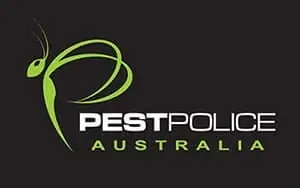The global pandemic has changed modern society in a number of ways, including the way we clean the
workspace. Dirt that we can see isn’t just the only thing we care about; these days, we’re keen to guard
our workplaces against a highly contagious virus and other invisible threats.
As companies transition into bringing people back to the office, the need to clean, disinfect, and sanitise
the place has become more important than ever. Not only that, the workforce and managers have to
understand what this new way to look at a clean office really means.
Difference Between Cleaning, Disinfecting, and Sanitising
These three may seem interchangeable but they really aren’t. The fact is that cleaning, disinfection, and
sanitisation all mean different things.
Let us begin with cleaning. It basically removes germs, dirt, and impurities (e.g. dust, crumbs, etc.) from
objects and surfaces with the use of detergent and water. Understand that cleaning alone doesn’t kill
germs but it does lower their numbers and decreases the risk of spreading communicable diseases.
On the other hand, disinfecting is designed to kill germs on surfaces using chemicals (e.g. disinfectants,
alcohol, bleach). It doesn’t necessarily clean dirty surfaces or remove germs. For the most part, the
disinfectant has to be left on surfaces and objects for a time to kill the germs.
Meanwhile, sanitising is done either by cleaning, disinfecting, or both with the goal of lowering the
number of germs to a safe level. Typically, what is considered a safe level depends on public health
standards or requirements set for the workplace. What one does to sanitise will vary, depending on the
company’s needs.
It’s worth noting that cleaning products used to eliminate stains aren’t always effective disinfectants.
Likewise, disinfectants may not be great at removing stains.
Stopping the Spread of COVID-19 in Business Premises
When it’s vital for the business to maintain a physical operation amidst the threat of the novel
coronavirus, the management has to assure the company staff and consumers that the premises are
safe for them to stay in. COVID-19, after all, is a highly infectious disease with no specific treatment
available to suppress its spread.
This virus basically spreads through respiratory droplets and individuals spread it by touching surfaces or
objects that have the virus on it. The person then gets infected the moment he or she touches his or her
mouth, nose, or eyes. A key means to protect everyone in commercial premises is to implement
stringent cleaning and disinfecting measures. The fact is that a combination of these two has been
known to be most effective in neutralising the COVID-19 threat in workspaces.
When to Clean and Disinfect
Cleaning surfaces and objects in offices with detergent reduces germs on surfaces by removing
contaminants. This procedure also weakens virus particles, typically decreasing the risk of infection from
surface contact. Cleaning a workspace once a day is viable for offices with no one suspected with
harbouring COVID-19 or for those with less customer interaction.
However, the same process doesn’t apply to businesses that constantly see and come into contact with
a steady stream of employees and customers (e.g. groceries, hotels, restaurants, etc.). In this case,
disinfecting will be the appropriate choice as it kills germs on surfaces, which reduces any risk of
spreading COVID infection.
Disinfecting, in conjunction with cleaning, has to be done frequently if these conditions apply in a
particular workspace:
● Low number of people wearing face masks
● An office is occupied by people with increased risk of exposure to COVID-19
● A high transmission of coronavirus has been reported in the immediate community
● Lack of access to proper hand hygiene
Key Touch Points Against Germs and Coronavirus
For the most part, pathogens transfer from person to person when one touches contaminated surfaces
and the hand touches the mouth or nose. With transmission enabled by contaminated touchpoints,
disinfecting becomes crucial in curbing the possibilities of spreading the virus.
Disinfecting the following key touchpoints that people commonly share helps in stopping the spread of
viral and bacterial pathogens:
● Cashpoints
● Door handles
● Handrails
● Kitchen and dining surfaces
● Petrol pumps
● Stair rails
● Supermarket trolleys/baskets
● Taps
● Toilet flush handles/buttons
● Trash bins
● Recycling areas
● Vehicles
Professional Disinfection for Offices
At the beginning of the service, the specialists will survey the site before the disinfection can commence.
This is a crucial phase as it allows a more accurate risk assessment and thorough method planning.
These will allow the specialists to devise safe operating procedures, too.
Disinfection technicians can then come to manually clean and disinfect the site using specialist
equipment, including an approved surface disinfectant and personal protective equipment (PPE). They
go through each contaminated room and systematically clean key surfaces and touch points.
Office Disinfection as Part of the New Normal
For business premises to safely and quickly return to their normal function, cleaning and disinfecting will
be crucial preventive measures to put in place. To further ease worries, the professional disinfection will
be carried out using approved safety procedures, tools, and products that are all compliant with safety
regulations.
If you’re interested in getting the office back up and running as lockdowns ease up, give our team a call
so your business can maintain high standards of hygiene that is appropriate for everyone to ease into
the new normal.

